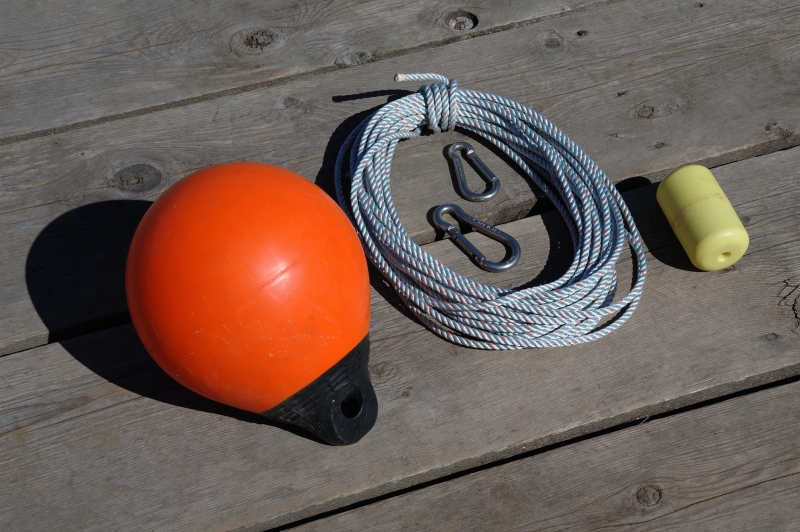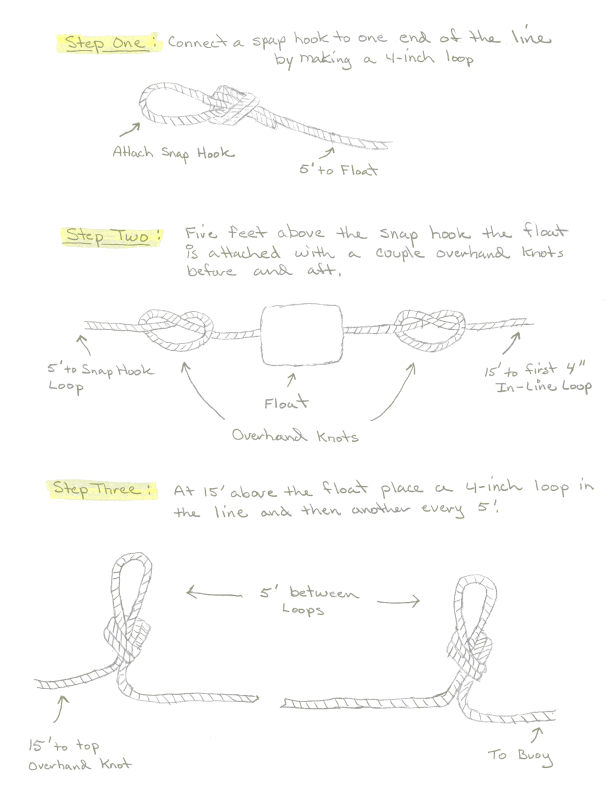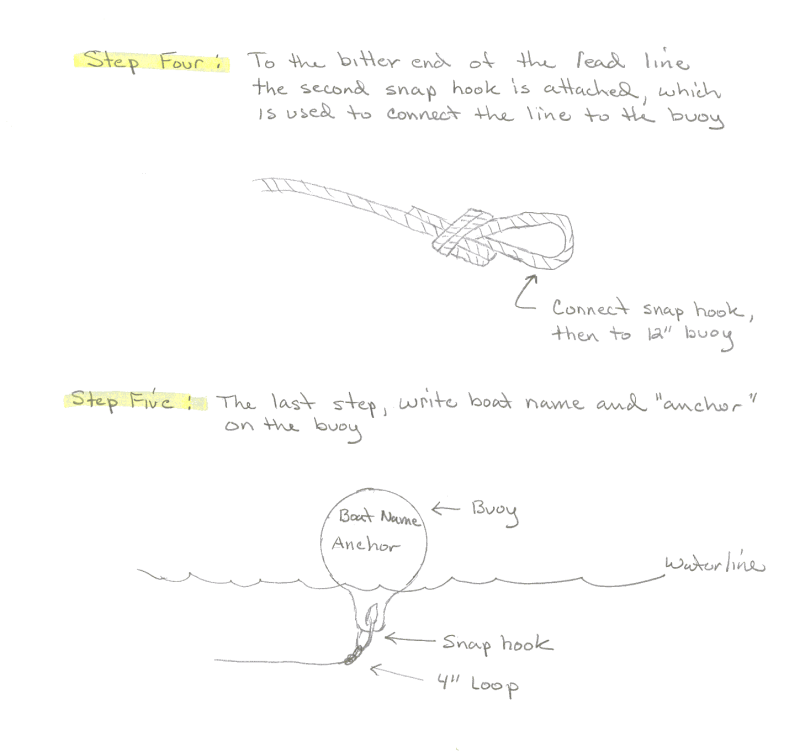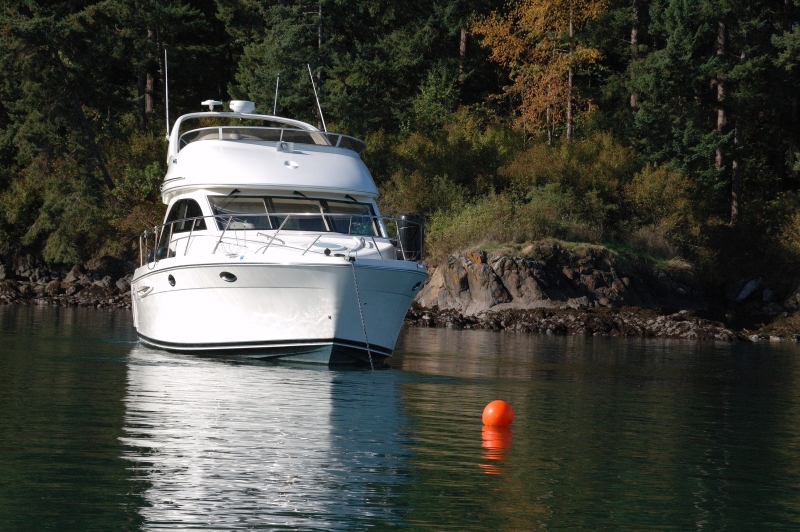Anchor Trip Line
3rd October 2023
A Simple Inexpensive Insurance Policy
You have most likely read or heard stories of boaters having a hard time retrieving their anchor because of snagging an old logging cable, being lodged between rocks, or hooking another boat’s anchor. If they had a simple device called an anchor trip line, they may have been able to free the anchor by retrieving it by the crown rather than the shank. A trip line is simple to assemble, and the components aren’t too costly.

The system consisted of a 12-inch round orange buoy, sixty feet of 5/16-inch leaded line, two stainless-steel snap hooks or carabiners, and a 3-inch fishing or 4-inch swimming pool float.
To assemble the trip line, connect a snap hook to one end of the lead line. When the system is going to be used this snap hook will be attached to the crown of the anchor. The use of leaded line minimizes the chance that you or someone else will become entangled, as would be the case with floating line. Five feet above the snap hook the float is attached. The float keeps the line above the seabed so that it will not foul on bottom or the anchor while setting. Fifteen feet above the fishing float there is a 4-inch loop placed in the line, and another every 5-feet thereafter. To the bitter end of the line the second snap hook is attached, which is used to attach the line to the 12-inch buoy. The loops in the line allow the length of the tether to be adjusted by hooking successive loops into the snap hook at the buoy until the desired length is achieved. Some skippers add a circle of reflective tape around the buoy so it can be located easily with a flashlight. The last step is to write the boat’s name and “anchor” on the buoy.

To deploy, determine the depth and then the height at high water. Then using the loops every five feet adjust the length accordingly securing the extra line by coiling and securing the loops on the buoy snap hook. As the anchor is lowered, feed out the trip line, keeping it taut so that the anchor does not spin and wind the line around the chain. When the trip line is completely out, the buoy is tossed into the water, which floats above the anchor with varying slack as the tide changes, the unused line hanging coiled neatly below the buoy.
To weigh anchor, position the boat so we approach the buoy from the up current side, so it drifts away from the boat to avoid running over the line when powering forward to release the anchor. Once the anchor and trip line are on board the trip line can be removed from the anchor by detaching the snap hook, line coiled and easily stored in the anchor locker.

If, when weighing anchor, it is discovered that the anchor is fouled, the buoy can be retrieved with your boat hook. Put some slack in the anchor rode by releasing chain from the chain locker, position the bow of the boat over the anchor and pull up by hand on the trip line. This picks the anchor by the crown thereby allowing a cable to slide down the flukes or backing the anchor out from between rocks. If you are unable to free the anchor by hand the trip line can be secured to the bow cleat and the boat slowly and carefully backed down to release the anchor.
Using an anchor trip line has a couple additional benefits. When setting the anchor, it’s obvious when the anchor is dragging because the buoy bounces. The buoy also marks the location of your anchor for other boaters, making it less likely that someone will foul your ground tackle with theirs.

Knowing exactly where your anchor is set, and that you do have a good chance of recovery if it does foul, makes the investment well worth it.


